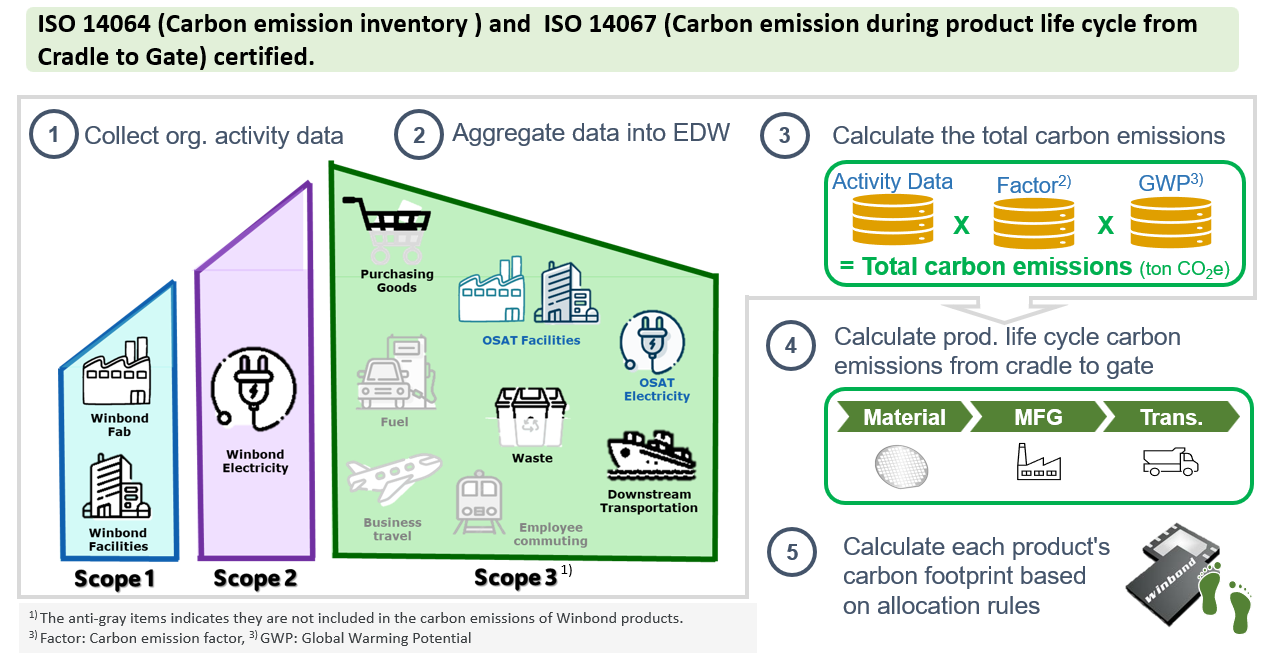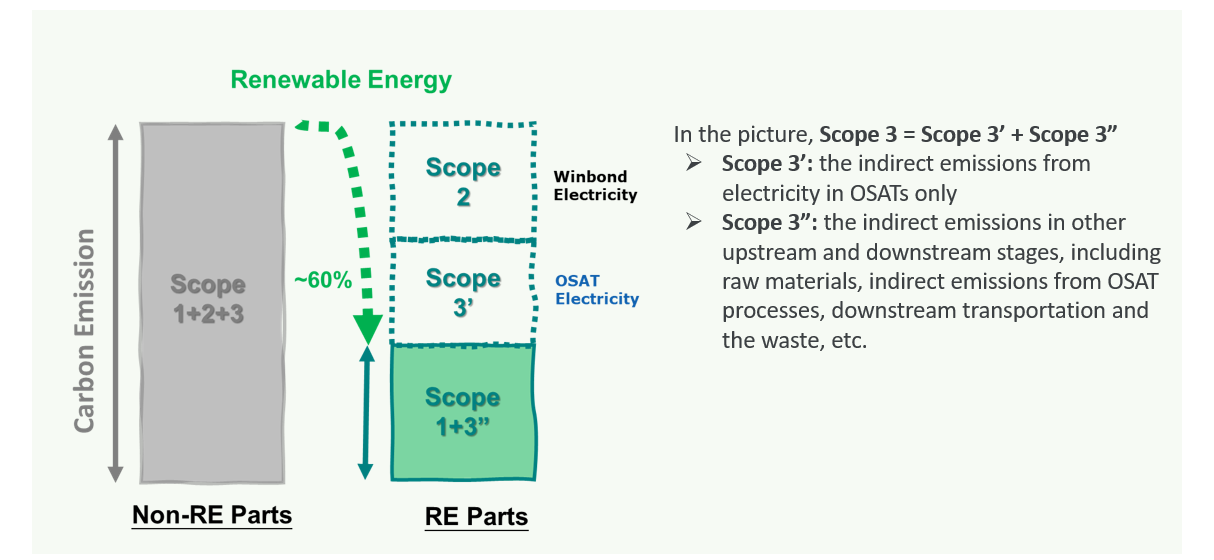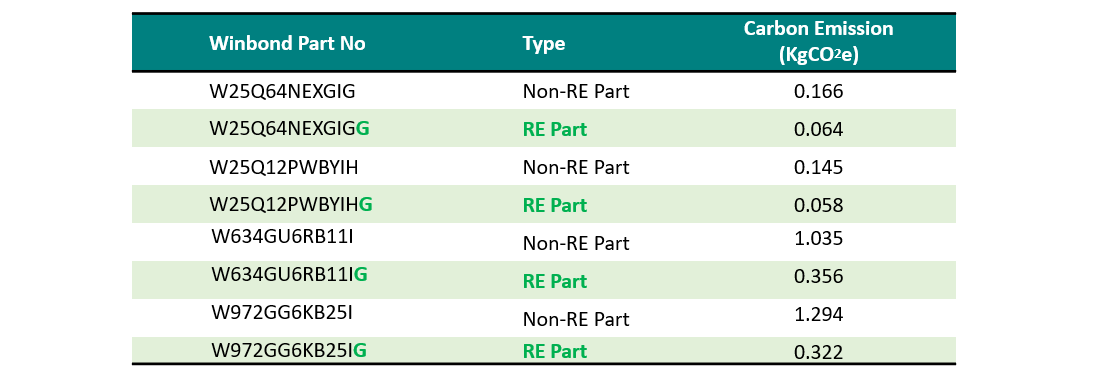The calculation of a product's "carbon footprint" follows Greenhouse Gas Inventory Protocol:
- Scope 1 Direct emissions: greenhouse gases directly generated by processes or facilities.
- Scope 2 Indirect emissions: Facilities rely on energy to operate. Greenhouse gases produced by this energy in product manufacturing.
- Scope 3 Other indirect emissions: carbon emissions generated by the upstream and downstream supply of the company's value chain.
Understand the current status of corporate carbon emissions and collect activity data within the organization:
Based on the life cycle of the product, collect and calculate the total carbon emissions of the organization from the cradle (raw materials) to the gate (transportation), and then calculate the carbon emissions of each product according to the direct attribution and allocation rules.

- Winbond uses actual production emission data in 2023 to deduce the estimated carbon emissions of individual products in 2024, and cites public reference coefficients and conversion factors as the basis for calculations.
- The actual carbon emissions will be slightly different depending on changes in external conditions during different calculation periods
Winbond's carbon inventory and carbon footprint

Parts Manufactured by Renewable Energy
Energy use is a major source of greenhouse gas emissions in manufacturing. Since ~60% of the carbon footprint of Winbond's products comes from the electricity used in the manufacturing line, Winbond introduces RE-Parts uses "renewable energy" to reduce the carbon footprint of this part effectively.

- The 13th code in the Part No by “G” indicates it is manufactured by Renewable Energy
- The Carbon emission of Non-RE and RE parts (examples) are shown as below.

- Please click the botton below to contact Winbond and get the carbon emission data of target parts.
In addition to conducting internal data surveys within corporate organizations, Winbond also cooperate with upstream and downstream partners and actively participate in advocacy action alliances to achieve the goals of the proposed carbon reduction strategy.
Carbon Footprint Disclaimer
Winbond is dedicated to advancing sustainable development and reducing carbon emissions. Winbond endeavors to ensure the accuracy of carbon footprint data disclosed in connection with our products, services, and operations. Notwithstanding, due to the inherent complexities of carbon footprint calculations, which involve numerous assumptions, standards, and data sources, the results may be subject to a degree of uncertainty or external influences, including but not limited to:
- Discrepancies in calculation standards and methodologies (e.g., international or regional standards);
- Incompleteness or delays in updating supply chain data;
- Variations in assumptions or reference data;
- Accuracy and reliability of information provided by third-party data sources;
- The impact of future changes in policies or regulations on carbon emissions calculations.
Accordingly, Winbond will not make any representation or warranty, express or implied, as to the accuracy or suitability of any carbon footprint-related information and disclaims any liability for any direct, indirect, incidental, or consequential damages arising from reliance on such information. Winbond welcomes feedback and recommendations from stakeholders to assist us in further refining the precision and transparency of our carbon footprint calculations and information disclosed. Should you have any questions regarding this disclaimer, please contact us at esg@winbond.com for further clarification.


 English
English